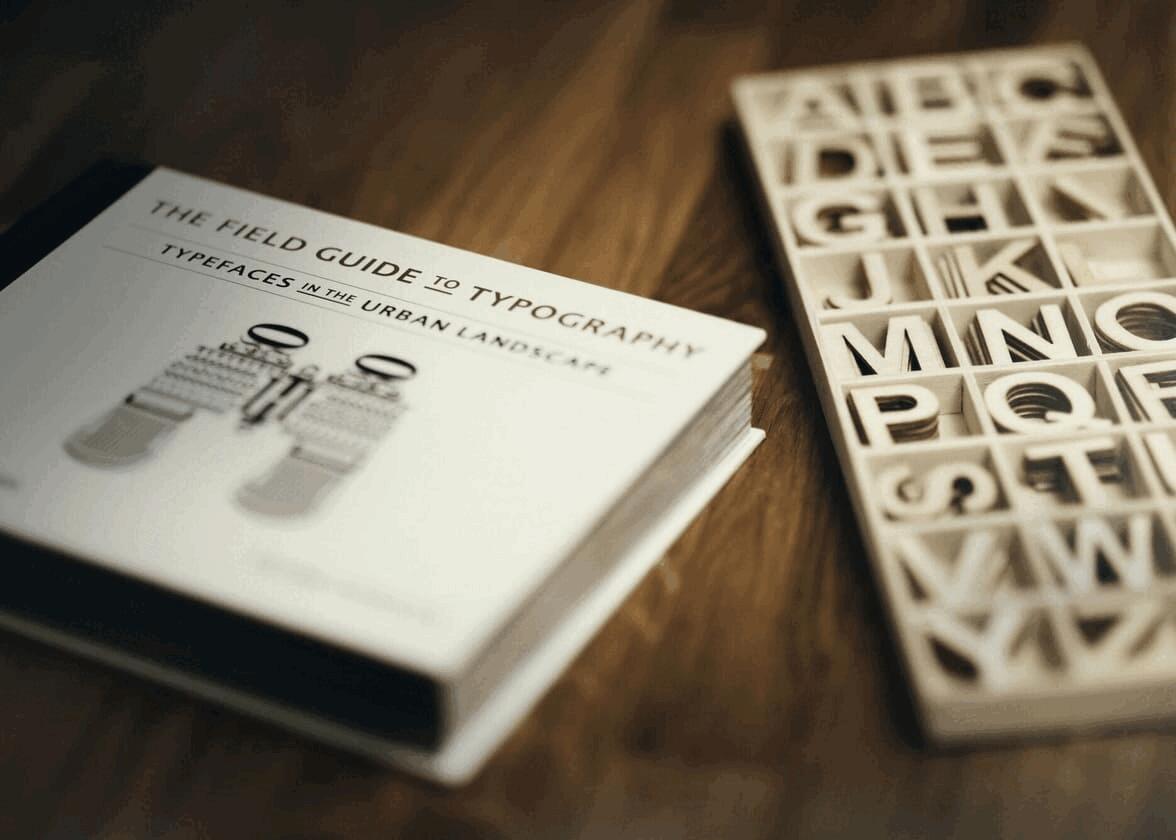Blog

Different Types of Typography and Fonts for Logo Design
Typography plays a crucial role in the world of logo design. It's the art and technique of arranging type to make written language legible, readable, and visually appealing. When done right, typography can elevate a logo, creating a lasting impression on customers and helping a brand stand out from the crowd. In this comprehensive guide, we will explore different types of typography and fonts for logo design, ensuring you have all the tools you need to make an informed decision when choosing the perfect font for your logo.
Before diving into the various types of typography and fonts, it's essential to understand some key terms and concepts.
What do terms like Typeface mean when compared to Typefont?
While these terms are often used interchangeably, they have distinct meanings. A typeface is a set of characters, including letters, numbers, and symbols, that share a common design. A font is a specific style, weight, and size of a typeface.
When building a font, a typeface forms the crux of the design journey. Elements such as baseline, ascenders and descenders and serif are considered.
Understanding these terms will help you better appreciate the nuances of different typefaces and make more informed decisions when choosing fonts for your logo.
Are you wondering where does typography come to play?
Well, typography is considered to be an artform wherein the designer creates a particular typeface in an adaptable font format. There are several different categories of typography, each with its own unique characteristics and applications.
Here, we will discuss four main types: serif, sans-serif, script, and display.
Serif Typography
Serif typefaces are characterized by small lines, or serifs, at the ends of their strokes. They are often considered more traditional and formal, making them a popular choice for print media and established brands. Therefore, it is a classic choice of designers to use this type of font to showcase tradition and credibility. Some examples of well-known serif typefaces include Times New Roman, Garamond, and Georgia.
Sans-Serif Typography
Sans-serif typefaces, as the name suggests, lack the small lines (serifs) found in serif typefaces. They are often seen as more modern and clean, making them a popular choice for digital media and contemporary brands. A logo created in Sans-serif has a modern yet aesthetic appeal. It works well with digital applications and websites. Some examples of well-known sans-serif typefaces include Helvetica, Arial, and Futura.
Script Typography
Script typefaces are designed to mimic the look of handwriting, with connected letters and fluid strokes. They can range from casual and playful to elegant and luxurious. A logo designed in this typography plays the advantage of customization. It can make to be a memorable icon which creates stronger brand recall. Some examples of well-known script typefaces include Brush Script, Lobster, and Allura.
Display Typography
Display typefaces are designed for use at large sizes and in attention-grabbing contexts, such as headlines, posters, and logos. They often have unique, stylized features that set them apart from other typefaces. A display typography comes with a limitation of adaptation especially when it comes designing logos. It may not work well on digital platforms but can be used to create strong visual impact. Some examples of well-known display typefaces include Cooper Black, Impact, and Bebas Neue.
Now that we have learned about the types of fonts, how doyou know which one works for your brand?
Align with Your Brand's Personality
The font you choose should reflect your brand's personality and values. For example, a serif typeface might be suitable for a law firm or financial institution, while a script font could be a good fit for a wedding planner or boutique. Consider your brand's core attributes and how the font can help convey those qualities.
Consider Your Target Audience
Think about the demographics and preferences of your target audience when choosing a font. Certain fonts might appeal more to specific age groups, genders, or cultural backgrounds. Ensure that the font you select will resonate with your intended audience and help create a connection with them.
Ensure Legibility and Versatility
A logo needs to be legible and versatile, working well across various platforms and applications. Choose a font that is easy to read at different sizes and in different contexts, such as on a website, business card, or billboard. Additionally, consider how the font will look in both print and digital formats.
The next big step: Customizing Fonts for Your Logo
Once you've chosen a font that aligns with your brand and meets your needs, you may want to customize it to create a more unique and memorable logo. There are several ways to modify a font, including adjusting the weight, size, and spacing, or altering individual characters.
Making subtle adjustments to the weight (thickness), size, or spacing (kerning or tracking) of a font can create a more distinctive look for your logo. Experiment with different combinations to find a balance that is visually appealing and aligns with your brand's personality.
Another way to customize a font is by altering individual characters, such as extending a stroke, adding a flourish, or removing a serif. Be cautious when making these adjustments, as they can impact the font's overall legibility and consistency. It's essential to maintain a cohesive look and ensure that any modifications still align with your brand's personality and values.
Once you've chosen and customized your fonts, it's essential to test your logo in various contexts to ensure it works well across different platforms and applications. Some factors to consider when testing your logo include readability, scalability, and adaptability.
Typography is a critical element in logo design, helping to convey a brand's personality and values while creating a lasting impression on customers. By understanding the different types of typography and fonts, considering your brand's needs and target audience, and customizing your chosen font, you can create a logo that stands out from the competition and resonates with your audience. Don't forget to test your logo in various contexts to ensure it remains effective and impactful across all platforms and applications.
More tips and tricks on the blog


